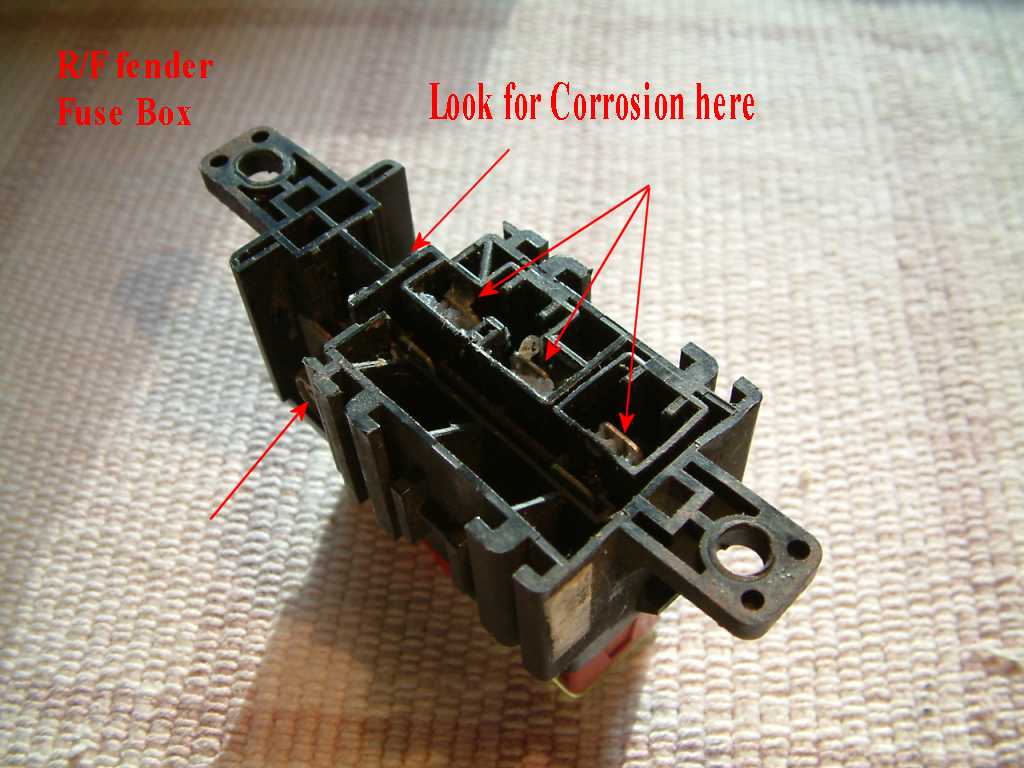Electrical power that prevents you from moving forward , or you head lights are dead. Electrical power loss.
Look on the engine bay right fender fuse box ,with a voltmeter.
See photo below of rusty fuse box. Cars Driven in the SALT BELT (wiki it?) succumbed to this little death.
This fuse box below is called the PDC on newer cars, power distribution Center in many newer car, but Suzuki calls it fuse box 1.
In all cases the battery terminals must be all clean , not green and tight.
This same failure mode, can cause any alternator to fail (good Alt)due to the resistance causing the Alternator to see this fault and just shut down and glow the Dash Charge lamp.
The drawings below show how power distributes to the critical parts of your car.
Typical 89-98 Sidekicks.
Keep in mind the the grounds handle the other path of power and here are the drawings on that.
I will show you 4 drawings:
Start, Charge and Head lamps and general distribution.
Note, that in each drawing all power comes from the one 60 amp fuse in the main fender fuse box,
I call that MAIN FEED, the main power buss. TEST POINT "A" IT MUST BE HOT AT ALL TIMES !
Below is the starting circuits and where the Headlight power originates.
Drawing 2 is the head lights (with no DRL ). Daylight Running lights = DRL.
Dead Head lights:
If you lose power to many things at once, Head lights, radio, dash lamps (gauges too) and wipers, and heater fan or even the engine dies.
Look here for lost DC power.
We check the rested battery voltage first. Across the 2 main battery lugs and they read 12.6v, if not hear there charge it. (running engine voltage must be 13.3v to 15v.)
If battery is low, charge it, if it don't take a charge, it's bad. or charge it and take the battery to any auto store and get it load tested.
Rule one:
If you lose head lights (DC power_ , please troubleshoot that first, as it a very simple circuit ( on purpose) and this failure usually means the main feed is bad.
With a volt meter one can find out, at what point you are losing power? (by moving the red meter test lead about)
Put Voltmeter or (VM for short) black test lead onto the battery minus terminal.
Turn on the head lamps (HL) and put the VM red lead to all terminals, on the below Fuse box (right fender) , one at time.
TEST POINT "A" is critical to have full power here , at all times.
If 0 volts measured , zero volts then the 60amp fuse blew or you have MR. GREEN below (corrosion)
Each terminal must read 12.5vdc minimum. All good charged batteries can muster, 12.6 VDC reseted. (not In Alaska 12.5v there.)
If the voltage is way low ,then move the black meter lead to the engine block and then body metal.
The readings should all be the same , about 12.5v, If not?,then the grounds can be bad.
Rule two:
If you can't get the HL to work? , all else is fruitless! If the 40amp fuse below is good. This means the Test point "A" is dead. (or weak)
The head lamps feed directly off the 60amp fuse and MUST work key on ,or key off !
The HL have a main 40Amp fuse and check all fuses in this fender box. (fuse sizes vary by year car)
The right front strut tower has this flaw, allowing salt water to HERE:
SALT BELT DEATH 1A: ( your D.O.T. in your State, dumps vast rock salt on the road in the winter for de-ICING)?
WARNING, before PULLING the below box, disconnect the negative minus marked, battery terminal lug or risk and acid bath or worse.
Photo1: (click to zoom)
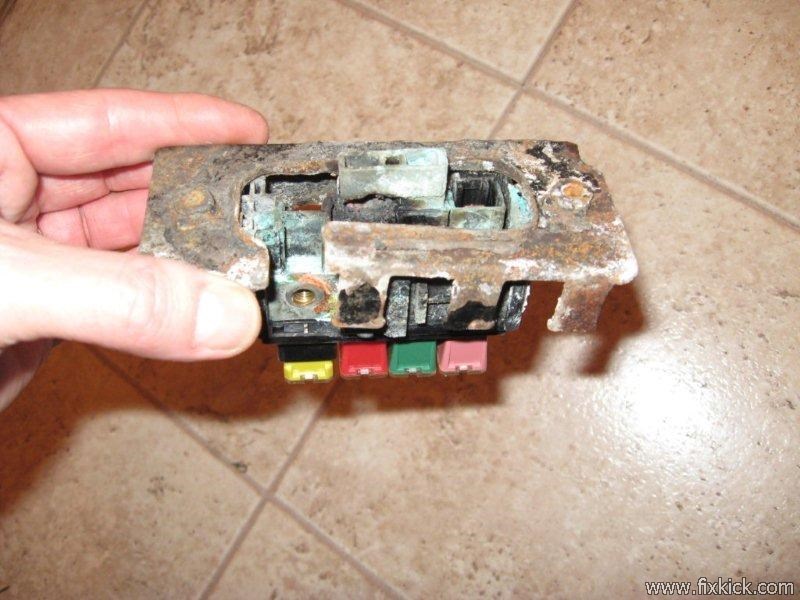
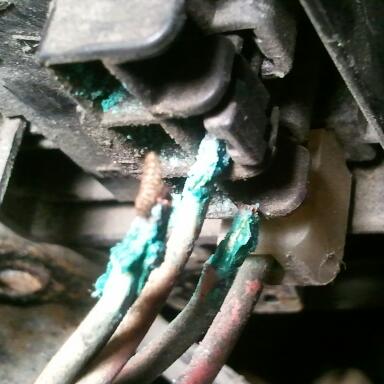
The first drawing #1 shows how to measure the cranking voltages:
1991-1995 Suzuki P/N 36730-60a20 (a00 for 1989/90)
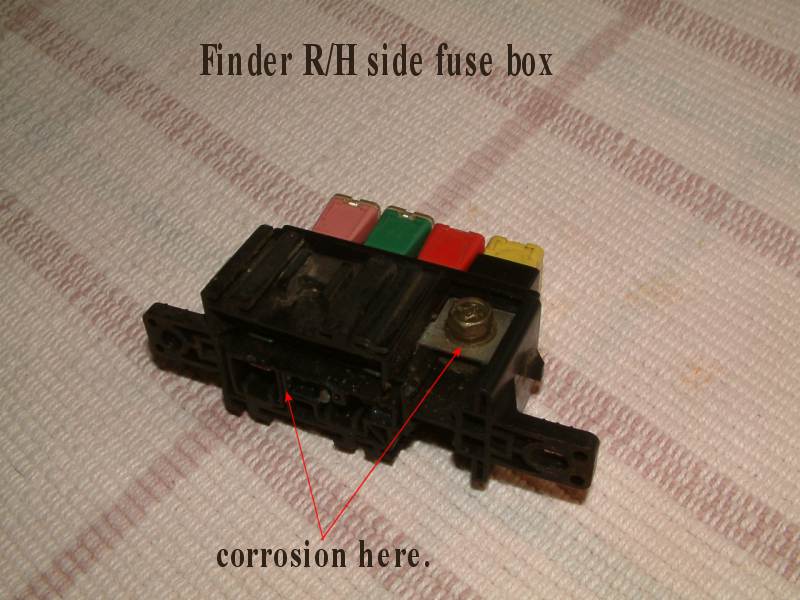 the good , Suzuki sold me a new one for $35,
the good , Suzuki sold me a new one for $35,Headlights good? if not this is bad 40a fuse left path, or Ignition dead and starter, then the 50amp fuse on the right, below, is bad.
Drawing 1: Starter and main power feed. ( only the Ignition path is shown a the 40/50a fuse) See drawing 4 , to see all fuses and all paths.!

The Main power buss picks up again below, and feeds the in cab fuse panel shown directly below.
If all HL's are out , then place a voltmeter at the back side of the 40 amp fuse above, which feeds the Hot at all times point below.
If the HL stick on, unplug the combo switch connector, if the HL go out, then the switch is bad. (some can be dismantled and fixed )
Drawing 2: Head Lights. (HL for short) this cab fuse box gets its power from the finder fuse box. See drawing 4 , to see all fuses and all paths.!
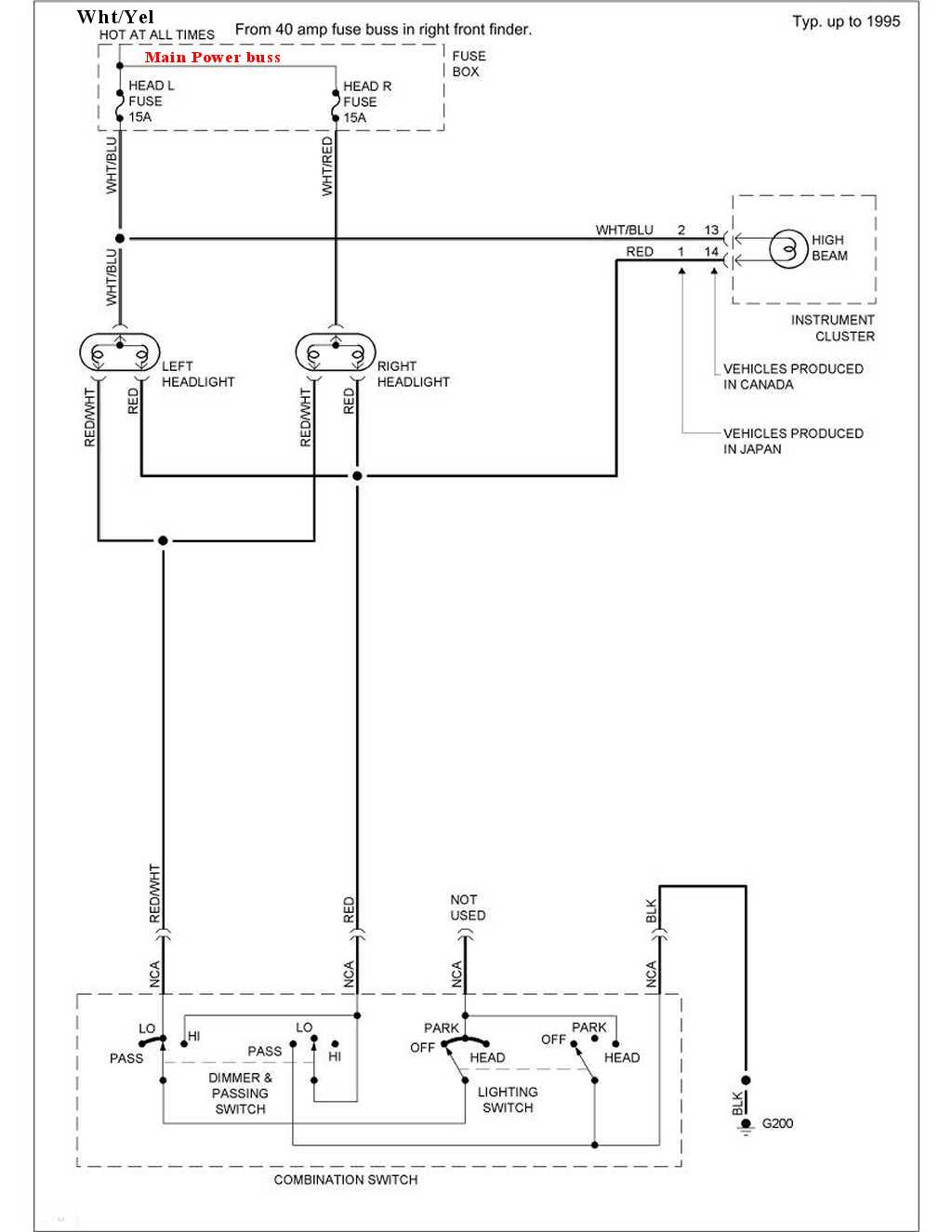
As you can clearly see, the Combo switch grounds the HL to make them glow.
Drawing 3: Charging paths. See drawing 4 , to see all fuses and all paths.! All years, 89-98 similar.
If any of the grounds or power paths below get rusty or corroded, charging will fail.
Unfortunately, the Alternator (gen) gets its ground from its bracket and it just loves to rust.
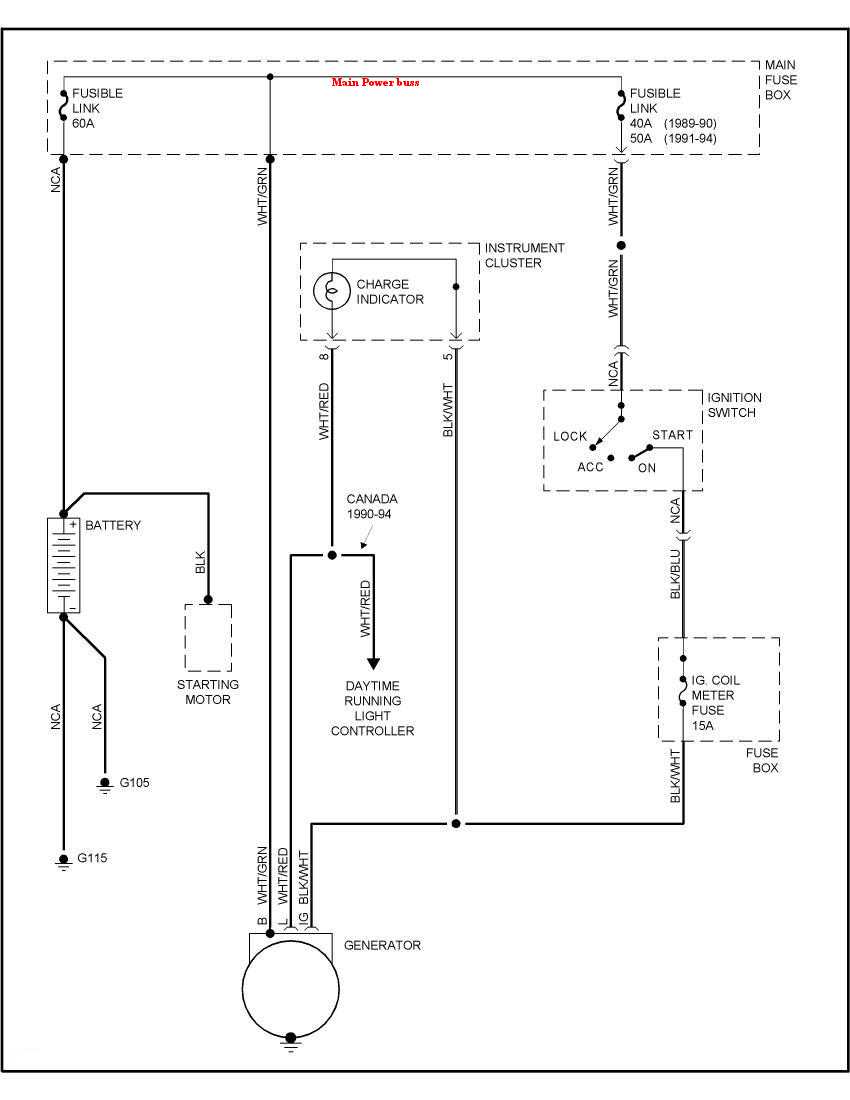
Last: Drawing 4 shows all other major power feed circuits in the vehicle. This one over all drawing should solve your problems.
This is the Total Distribution main drawing. 1994.
SALT BELT DEATH 1A: ( your D.O.T in your State, dumps vast salt on the road in the winter for de-ICING)
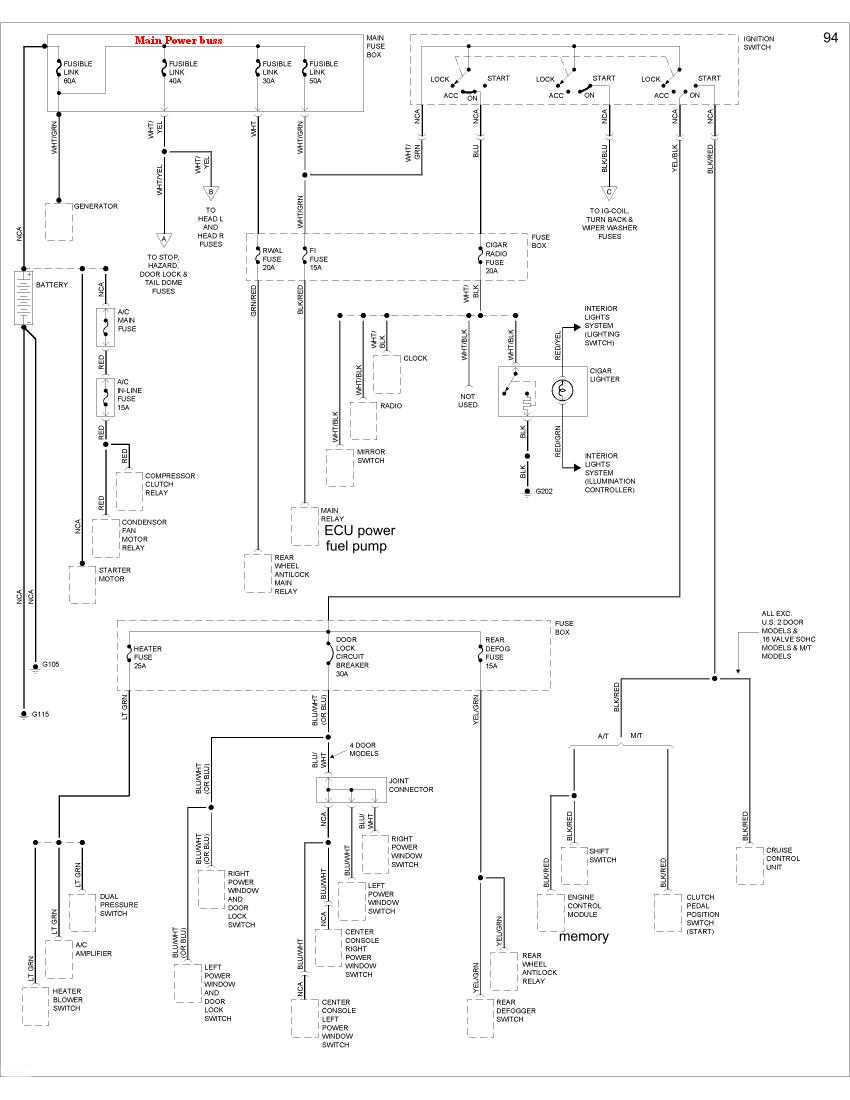
With these 4 drawings just about any Sidekick up to 95 or even up to 98 can be traced.
The above is a road map.
A cheap voltmeter is all you need to find an open or resistive path.
Look here for the Instrument cluster wiring.
See actual 1998 full distribution drawing , full size.
The bottom of MAIN FUSE box. (no salt here, see factory dielectric grease ?) 1991 and still good.
